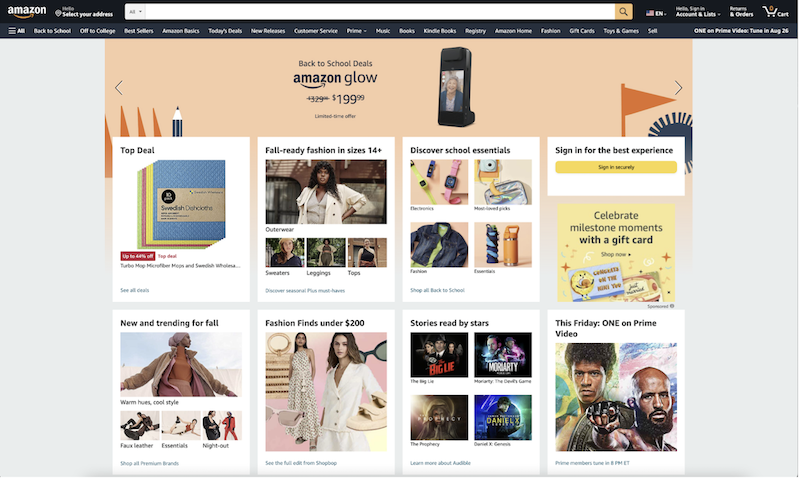Omnichannel marketing incentivizes retailers to invest in the quality of every customer’s experience and improve their ability to understand and market to those customers.

Keywords
Omnichannel marketing is just a sparkle in the retail world’s eye. But that September, the stage is set by a groundbreaking study. According to IDC Retail Insights, retailers using multichannel strategies are able to boost average transaction size by 15-35%—and loyalty customers’ profitability by 5-10%.¹
Three years later, the notion of omnichannel retail—the integration of all existing retail distribution channels into a single, seamless shopping experience—was featured in Huffington Post. In the article, the emergence of omnichannel marketing is attributed to the exploding popularity of smartphones, which have enabled consumers to research competitive pricing while in the act of shopping.
Within another year, an MIT report proclaims that omnichannel consumers are the “central force shaping the future of e-commerce and brick-and-mortar stores alike,” driving $12 billion in retail sales from their smartphones and using online research to drive $1.1 trillion in store sales.¹
Omnichannel for retail—as powered by product information management (PIM) and CRM platforms—had officially arrived.
But where did it come from? And what exactly does it look like?
Let’s go all the way back to the ancient days of traditional single-channel marketing.
Retailers with only brick-and-mortar or online stores were able to reduce overhead, drive sales growth and secure market leadership by focusing their resources on a single distribution channel. But as consumers began to embrace the digital revolution and all the new platforms and devices that came with it, it became nearly impossible to compete with a single-channel strategy.
And thus multi-channel marketing was born, giving consumers greater choice over how and when they purchase products—and giving retailers greater insight into what their customers wanted and how to personalize the shopping experience.
But challenges arose.
Creating a seamless customer experience across multiple distribution channels, synchronizing channel data, expanding supply chains while maintaining inventory accuracy—it all put a tremendous strain on the multi-channel strategy, sparking another tectonic shift in how retailers respond to rapidly changing consumer trends: integrations.
By pulling every possible on- and offline distribution channel into a single, cross-platform shopping experience and centralizing data management, omnichannel marketing was able to give consumers and retailers a much better way to interact and transact.
Consumers could now rapidly and conveniently start their product search on one channel and complete their purchase on another. And retailers could now effectively align sales channels, inventory management solutions and marketing strategies.
Everyone won. And won and won.
Getting an omnichannel retail strategy right isn’t just about taking a holistic approach to consumer interactions across different distribution channels. It’s about bringing the entire customer experience into focus—and making sure the journey from Discovery to Purchase is absolutely seamless.
From social ads and email newsletters to push notifications, chatbots, and face-to-face conversations, product information (and brand identity) needs to stay consistent. And transitioning between these marketing touchpoints needs to feel fluid.
If a site isn’t mobile-friendly, if experiences differ from touchpoint to touchpoint, or if information is itself inconsistent, omnichannel marketing just won’t pay off.
Equally as important is personalization.
In a world where consumers expect companies to fully understand their needs and challenges, employing CRM systems and in-store technologies to customize the customer experience is critical.
And when done right, the benefits are many and mutual.
For example, creating personal logins for consumer accounts enables customers to save their preferences and simplify their sales journey. At the same time, it gives businesses an opportunity to collect valuable customer data (like email addresses, interests, and purchase histories) that can dramatically improve the effectiveness of future marketing efforts.
Of course, aggregating and analyzing all that data across multiple retail platforms is no easy task. And building an infrastructure that can support and standardize massive amounts of information is the only way to accurately and effectively unlock actionable consumer insight.
Today’s retail landscape is crowded with omnichannel retail success stories—and there’s no shortage of high-profile omnichannel eCommerce examples to learn from.
Take Amazon.

From a simple online bookstore to the largest online marketplace in the world, Amazon sets the standard for marketing savvy. Today, the company’s ability to smoothly integrate everything from eCommerce and order management to warehousing management and order broker solutions remains a testament to the power of omnichannel retailing.
And by focusing on consistent, quality customer engagement across the entire retail ecosystem, Amazon has been able to cultivate a vast global audience that gives its retailers greater visibility, improved customer traffic, and increased revenue.
But how far can you take customer engagement?
Just ask Disney.

The entertainment behemoth’s gorgeous, responsive website makes it easy to plan a trip from the comfort of your phone. Once they’re booked, customers can then plan their entire vacations through the My Disney Experience mobile app—and use it to do everything from locate attractions to assess wait times.
If that weren’t impressive enough, Disney’s Magic Band program has made it possible for customers to use a single digital tool to unlock their room door, store photos, and order food. It even has a Fast Pass function to keep things moving along.
It’s a shining example of how seamlessly integrating multiple platforms and technologies can enhance the customer experience and bolster brand loyalty.
One more omnichannel eCommerce example for the road?
Consider Starbucks.

The company’s free reward card program enables customers to check and reload credit card information via phone, website, in-store, or mobile app. Any change in the information is then automatically updated across every channel in real-time.
It may seem simple or straightforward enough, but it’s one of those little conveniences that keeps customers coming back for more.
Today’s customer journey is anything but linear.
In the wake of a global pandemic, most of us were forced to shop differently—and constant advances in technology have made doing so easier and more rewarding than ever.
We interact with brands across multiple touchpoints, we discuss products across multiple channels, and we expect the people selling those products to know what we’re looking for—sometimes before we do.
Omnichannel marketing makes it all possible, incentivizing retailers to invest in the quality of every customer’s experience and improving their ability to understand and market to those customers.
And with the advent of PIM systems that ensure correct, consistent, high-quality data across every channel, retailers have everything they need to create compelling customer experiences that drive growth.
The whole omnichannel system’s symbiotic. And it works.
As technologies emerge and evolve, as retail strategies adapt, and as customer expectations continue to rise, omnichannel marketing will continue to play a critical role in retail success.
Sources
¹ https://nectarom.com/2015/01/05/brief-history-omnichannel-marketing/

Point-of-Sale systems are transforming how businesses operate — from processing payments to tracking data and improving customer service. Discover...
Read more
SAP Hybris is a powerful eCommerce and customer experience platform, but its full potential is often limited by inefficient product data management...
Read more
Product content syndication is transforming the way brands distribute and manage product data across multiple sales channels. By automating updates...
Read moreNotifications